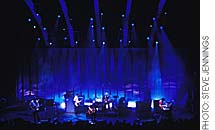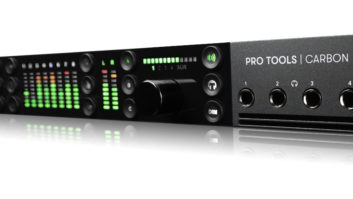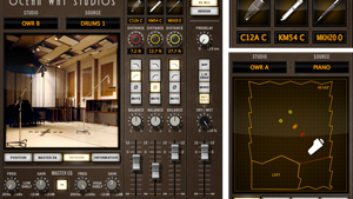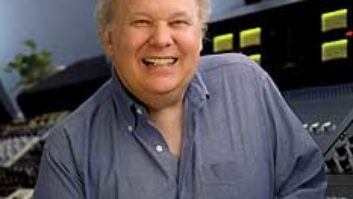
Electro-rock quintet Radiohead kicked off the U.S. leg of their tourthis summer in support of their latest album, Hail to the Thief,and subsequently sold out nearly every amphitheater and arena on theiritinerary. A mesmerizing light and video display provided a futuristicbackdrop as the British band sailed through nearly 25 songs from theirsix-album catalog, barely taking a breath in between. While Radioheadand opening act Supergrass prepared for their Mountain View, Calif.,date at Shoreline Amphitheatre, Mix talked with their core livesound team about one of the hottest tours of the year. New York’sFirehouse Productions supplied consoles, the monitoring system,microphones and processing for this tour, while L.A.-based AudioTekprovided the P.A. and amplification.
Front of house engineer Jim Warren mixed Radiohead’s ever-evolvingpostmodern rock on a Soundcraft Series Five console and used aSoundcraft Spirit 324 submixer for effects returns. Warren says thatthe digital Spirit 324 works well with the MIDI aspects of the56-channel analog desk. Radiohead’s longtime engineer uses minimaloutboard gear, keeping a TC Electronic M1 and M1XL nearby for vocaleffects, an SDE3000 for occasional delay and a Vocoder for additionalvocal manipulations. He runs bass guitar through a Tech21 SansAmp, anduses the Line 6 POD Pro for vocal distortion.
Warren miked all vocals with Shure Beta 87As, and used Shure MC50Bsfor acoustic piano and Glockenspeil, Audio-Technica mics for guitar,Sennheiser 504s and a Shure Beta 98 on the drums, and an Audix OM3 forguitarist Jonny Greenwood’s amp.

System designer and P.A. guru Florent Bernard chose an L’AcousticsV-DOSC P.A. system with a total of 40 V-DOSC cabinets, six dV-DOSCcabinets and 12 ARC loudspeakers. The system also includes 12 AudioTekCSW-218 subs a side: eight flown and four on the floor. “If youfly the subs, you won’t blast the people in the front row with a lot oflow end,” Bernard says. QSC 4.0 and 9.0 power amps, a QSCcontroller and XTA DP-226 processors round out the package, controlledwith the aid of a rackmounted PC and a wireless tablet PC.
Monitor engineer Graham Lees manned an expanded 56-input MidasHeritage 3000 for seemingly obvious reasons. “It’s an analogdesk, and they’re an analog band,” Lees says simply. The banduses three additional fixed keyboard positions, which Lees cues intoplace at different times, “another reason for using an analogboard,” he adds.
Lead vocalist Thom Yorke, drummer Phil Selway and guitarist EdO’Brien use Firehouse 6500 custom-mold in-ear monitors, with ShurePSM700 Series beltpacks. “But they use wedges at the sametime,” Lees says. “They actually use the in-ears for whatthey don’t want to hear.” The Greenwood brothers relysolely on Firehouse’s custom FP12 and FP15 wedges at a low volume.“It’s pure quality rather than quantity,” Lees says.
Lees’ outboard rack includes BSS compressors, XTA D2s for vocal EQand a Lexicon PCM 70 reverb. Monitor coordinator Clive Goodwin monitorsamplifiers and crossovers on a laptop equipped with Audio Coresoftware, and also operates a custom-designed, computer-driven radiofrequency-scanning system.
Regarding working with such a versatile band as Radiohead, Bernardsays simply, “Every day’s different.” And with a dry wit,Warren adds, “Yet every day’s the same.”




